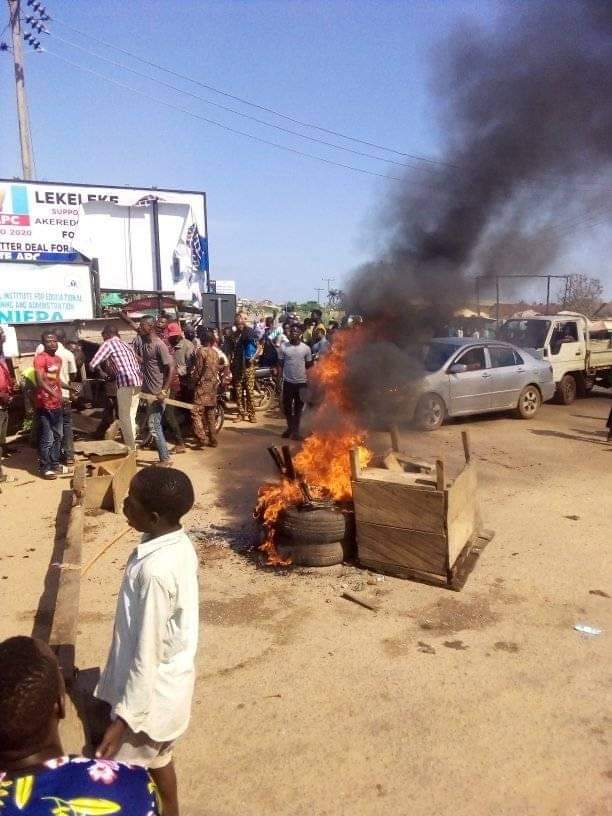

A global development report by Karen McVeigh supported by the Bill and Melinda Gates in July, 2020 had warned of the economic impact of coronavirus on most third world nations, The Precision NG can understand.
Nigeria is presently facing a week-long unrest occasioned by protesters demanding an end to police brutality with the hashtag ENDSARS.
The unrest has come with its good, bad and the ugly sides. While government has announced an end to the special unit within the police force during a public outing by the president, the protesters have however remain adamant saying the government could not be trusted. The president is yet to officially address the nation over the unrest.
Related: Sanwo-Olu Declares 24hrs Curfew As #EndSARS Protest Turns Violent
#EndSARS: President Buhari’s Silence Fueling Protests – CNPP
Benin Prison Break: Edo Govt Okays 24hrs Curfew
Lives have been lost, there has been a prison break, police stations have been burnt down, while schools are being shut after reopening.
According to the analysis reported in July, the economic impact of the pandemic was described as a “tinderbox” that will drive civil unrest and instability in developing countries in the second half of 2020.
“Highest risk countries facing a “perfect storm”, where protests driven by the pandemic’s economic fallout are likely to inflame existing grievances, include Nigeria, Iran, Bangladesh, Algeria and Ethiopia,” the analysis said.
37 countries, mainly in Africa and Latin America, could face unparalleled street protests for up to three years, global risk firm Verisk Maplecroft warned.
But the risk of unrest in other countries including India, Brazil, Russia, South Africa, Indonesia and Turkey are only slightly less acute and still constitute a threat to stability, it warned. The US, which has seen widespread Black Lives Matter protests following the killing of George Floyd by a police officer in May, could also see further uprisings, analysts said. The combination of these protests, alongside mounting frustration over job losses and President Trump’s weak pandemic response meant further unrest was “inevitable”.
Civil unrest fell in March this year, following lockdowns imposed by governments in response to the health crisis, according to data provided by Armed Conflict Location and Event Data (ACLED), an NGO which tracks fatalities and other data.Advertisement
Miha Hribernik, Verisk Maplecroft’s principal analyst said the total number of protests in developing countries has almost rebounded to pre-pandemic levels, as long-standing grievances over socioeconomic inequalities, civil and political rights, and government corruption have resurfaced.
“With many countries still in lockdown, and the full economic shock of the outbreak yet to be felt, we expect the number of protests to surge over the next 2–3 months,” said Hribernik. He used five factors to determine the ability of 142 countries to bounce back from the pandemic, as well as data from past protests, to determine projections of civil unrest.
“It’s a tinderbox” he said. “It doesn’t take as much as it did a year ago.”
“We can see that as the lockdown started the vast majority of the protests were Covid related. We had food protests in Manila and protests in Bangladesh over the garment industries.”
At least 166 people died during violent demonstrations in Ethiopia in recent weeks, following the murder of a popular singer, Haacaaluu Hundeessaa, a member of the Oromo ethnic group, and a leading voice in anti-government protests. Public uprisings have also been seen in Manila, the Philippines, over food shortages and in Bangladesh among garment workers facing unpaid wages after the cancellation of billions of dollars of clothing orders.
In 2019, Verisk Maplecroft recorded 47 countries with a significant uptick in protests, including Hong Kong, Chile, Nigeria, Sudan and Haiti. It predicted more turmoil in 2020.
“It was very much a global phenomenon last year” said Hribernik. “Each protest was unique, primality driven by anger over inequality, corruption, erosion of trust of political elites. These are not issues that can be resolved overnight. They are structural issues that take years or decades to address.”
Countries from every region, except Europe, now fall into the highest risk category, according to the company’s six-month civil unrest projections and its recovery capacity index (RCI). The RCI uses the strength of state institutions, physical and digital connectivity, economic dynamism, population sensitivity, and other factors, such as natural disasters or terrorism, to determine impacts on recovery from the pandemic.
“Our base case from January – that 2020 will see a surge in protests and that the coming decade is set to be a one of unprecedented unrest – still stands,” said Hribernik. “But in the countries least prepared to bounce back from the pandemic, it now looks like a best-case scenario.”
In sub-Saharan Africa, Verisk Maplecroft expects the risk of protests to intensify amid economic decline, poverty, and inability to guarantee adequate food supplies. In Latin America, Venezuela is ranked as being at greatest risk of unrest.
*Texts adapted mainly from theguardian.com














